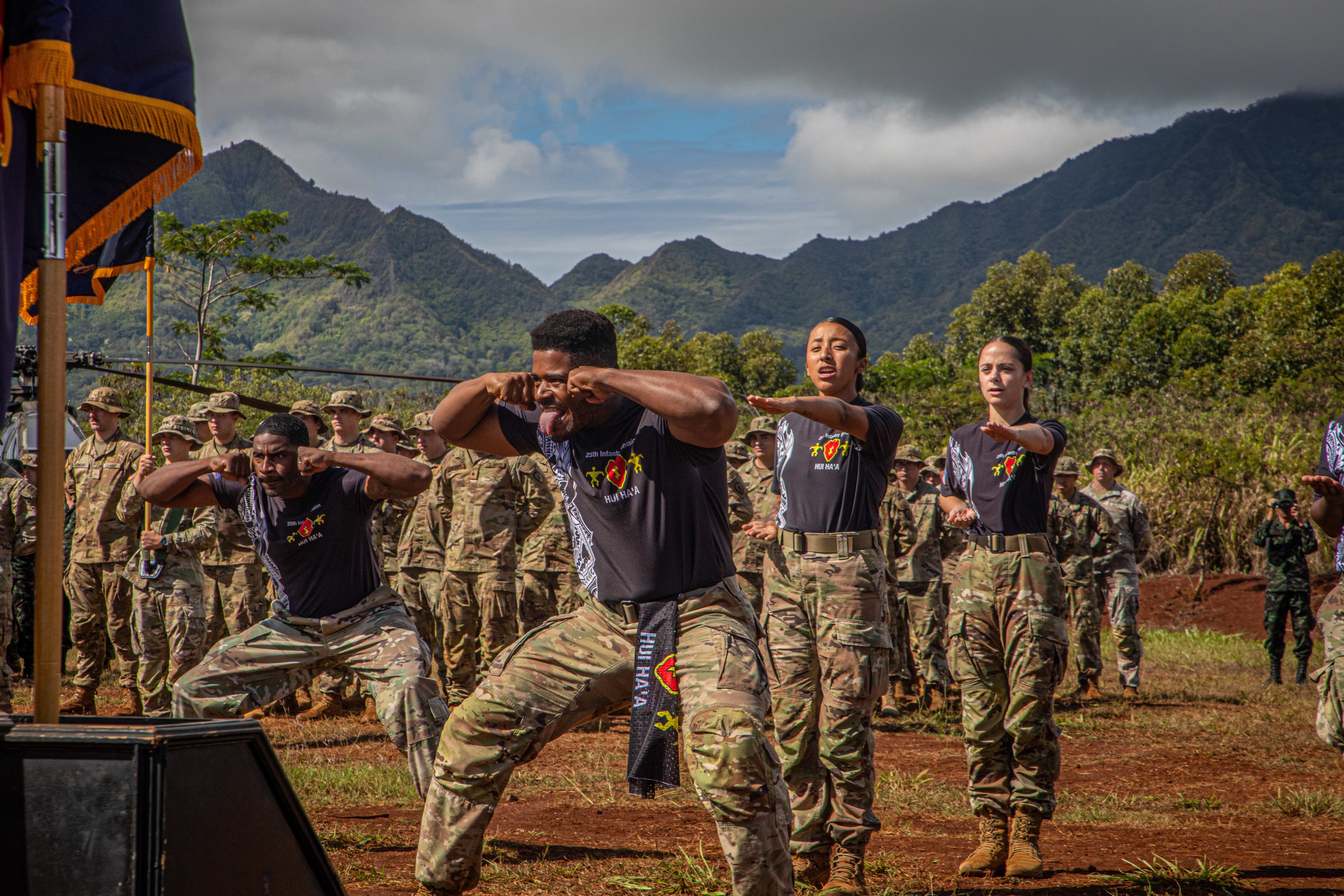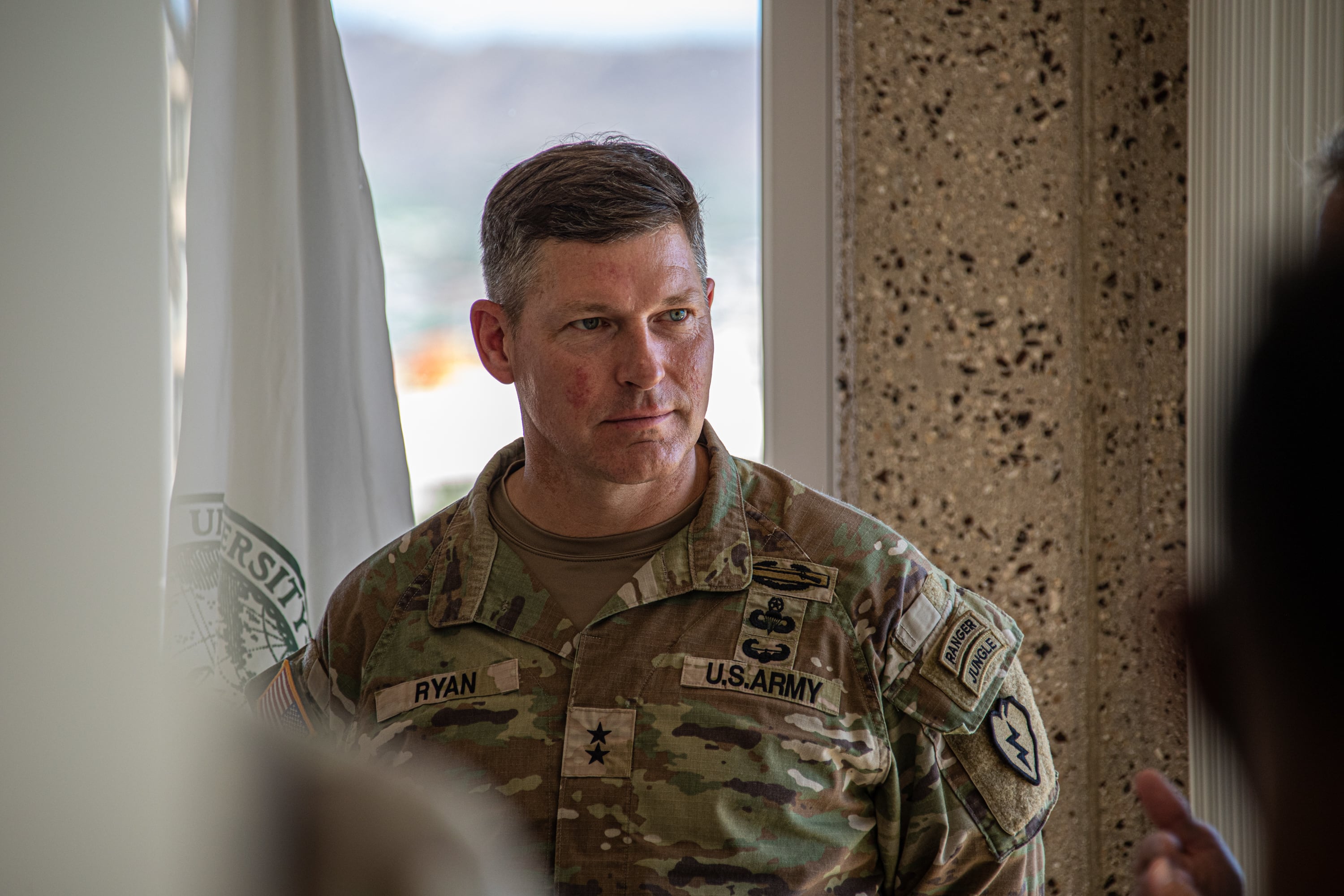Soldiers in the Pacific, be that Hawaii, Alaska or beyond, are getting in-theater training in the terrain and conditions they may face if called up to counter the Chinese military or other adversaries.
That due mostly to the combined capabilities of the Joint Pacific Multinational Readiness Center in Hawaii and the exportable Combat Training Center modules that the Army has put into action in recent years.
And the general in charge told Army Times that joint- and partner-focused training is expected to grow in the coming year.
RELATED

Maj. Gen. Joseph Ryan spoke in December with Army Times about some of the lessons learned from one such large-scale exercise at the JPMRC this past year and what’s in store for future Pacific-focused training.
Ryan serves as the commanding general of 25th Infantry Division and U.S. Army Hawaii.
A three-week training exercise that ran from late October through early November had 6,000 soldiers participating, pairing units from the 25th Infantry Division alongside military partners from Thailand, Indonesia and the Philippines.
The main force, 2nd Brigade Combat Team, 25th Infantry Division, took on a geared-up opposition force from the 196th Infantry Brigade.
“When you look at a map, geography matters, right?” Ryan said. “These are countries that are very important in the region.”

The JPMRC had another large-scale exercise earlier in the year when the Alaska campus hosted Army, joint and allied partners in March.
The October rotation also included joint partners from the Air Force, Navy and Marine Corps, and Coast Guard, Ryan said.
“We’ve expanded our participation with the Air Force and the Marine Corps in particular, pretty significantly this past year,” Ryan said.
The two-star specifically referenced work with the Corps’ new 3rd Marine Littoral Regiment, a newly built formation shaped to counter peer or near-peer threats in the littoral or near-beach amphibious zone.
The added Air Force role included landing C-130 and C-17 planes on Bradshaw Field in the JPMRC area, a very short landing strip not used in years. Ryan said the last time those types of planes flew into that airstrip was possibly in 2000.
The October exercise included live events on four islands in the Hawaiian Island chain and simulated events on a fifth island.
The rotation simulated “jungle archipelagic conditions”
The joint center has three “campuses” according to an Army statement. Those include one in Hawaii, one in Alaska and an exportable capability that can be transported across the region to partner or U.S.-controlled areas.
While some seasoned soldiers with 25th ID likely boxed up their gear and headed to the National Training Center at Fort Irwin, California or the Joint Readiness Training Center at Fort Polk, Louisiana for past deployments, current units can set up in their backyard.
Ryan said some have different opinions about that. There are those who argue training near home station is too easy because it’s familiar terrain. But the major general countered, after a few rotations, NTC and JRTC can get familiar, too.
And then there are the partners.
It’s much easier to bring in Pacific partners to a Pacific-based training center. Or even, as has happened at least once already and is the plan in 2023, to take the exportable training center equipment and staff to the host nation.
“Our partners want to train in the region,” Ryan said. “…and why do they want to train in the region? Because training in the region has a deterrent effect all on its own.”
Ryan sees potential to expand the number and types of partners for future rotations, as well.
The recent rotation included a dozen “observer” nations -- Australia, French Caledonia, Bangladesh, Japan, Korea, Malaysia, Mongolia, New Zealand, Philippines, Singapore, Indonesia, Thailand.
Some of those could join in the training this coming year.
“I think we’re going to get some maneuver units perhaps from Japan, Republic of Korea, maybe New Zealand,” he said.
At the same time, soldiers are learning from their Marine and Navy brothers the importance of good ship and boat work in these island territories.
“As the 3rd Marine Littoral Regiment continues to grow and gain capability, we’re going to ask them to continue to get training objectives further forward so we can help meet (those objectives),” Ryan said.
Todd South has written about crime, courts, government and the military for multiple publications since 2004 and was named a 2014 Pulitzer finalist for a co-written project on witness intimidation. Todd is a Marine veteran of the Iraq War.




